Bakes and Saltfish A Breakfast Classic Explained
40 min read Explore Grenada’s beloved breakfast: fluffy fried bakes with savory saltfish. Learn origins, authentic techniques, seasoning secrets, and serving ideas to recreate this island classic at home. October 06, 2025 06:06
The first hint that breakfast is on its way in Grenada is not a clock but a scent. It drifts out of tin-roof kitchens and roadside stalls like a quiet invitation: hot oil humming, dough turning the color of old gold, onions and sweet peppers sweating into saltfish, a prickle of thyme and culantro rising with the steam. On a good morning—say, a misty one above St. George’s Carenage—you can close your eyes and walk toward that perfume and arrive exactly where you need to be. Bakes and saltfish will be waiting: a warmed paper bag, a quick “morning, chile,” and a crunchy-soft round of dough that tears open to release a sigh of heat and nostalgia.
The Morning Symphony of Bakes and Saltfish

If you stand by the low wall near St. George’s Market Square on a Saturday, you’ll hear the city settle into its day. The buses chatter like parakeets at the Bruce Street terminal; a knife pops against a coconut’s top, sending up a green, sweet mist; and there, under a shade tent, someone is frying bakes the way their mother did and her mother before her—palms dusted with flour, oil hot and steady, fingers quick and gentle so the dough puffs and the center stays tender. It’s theater, with the oil as orchestra.
The saltfish pan hums a different melody. Onions slide into coconut oil with a soft hiss; they become translucent, then sweet, then caramel at the edges. Julienned bell peppers—red, green, and the occasional golden—toss in an arc and fall like confetti. Tomatoes collapse into a jammy gloss. A leaf of bay, a sprig of thyme, a ring or two of Scotch bonnet just for fragrance, and the star: flakes of saltfish, desalinated until they’re firm but not fierce, savory but not briny. When the vendor stirs that pan, the smell is part ocean breeze, part garden, part memory. Grenada’s nickname is the Spice Isle, and while nutmeg and mace are the obvious mascots, I’d argue the true everyday spice is the perfume of breakfast in the square.
History on a Plate: From Salted Cod to Grenadian Comfort
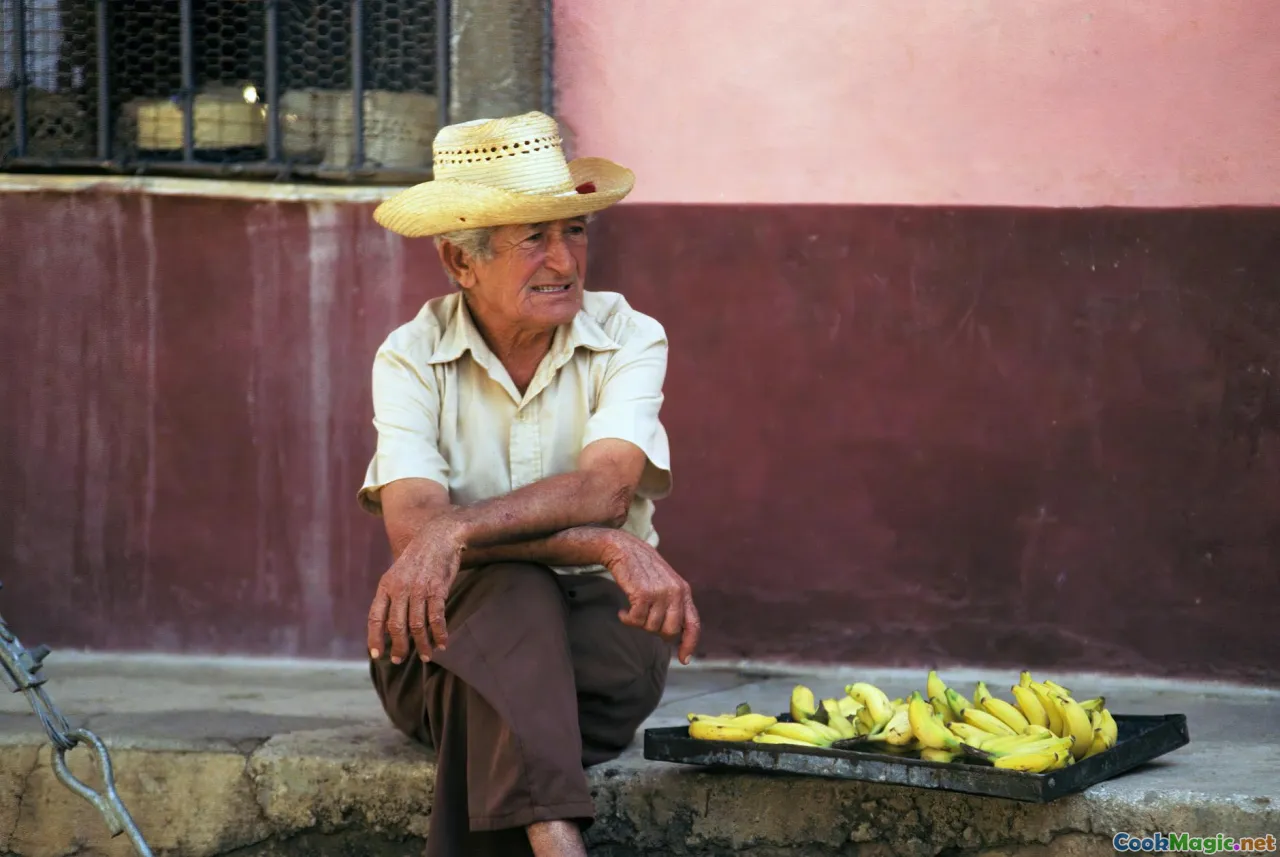
Saltfish arrived in the Caribbean not out of culinary curiosity but out of economics. Centuries ago, cargo holds left the cold North Atlantic stacked with salted cod—dried hard and preserved in a sparkling crust of salt—and made their way to ports across the islands. Grenada, caught up in the brutal machinery of colonialism, became part of a triangle of trade. Saltfish, shelf-stable and cheap, fed plantations and fortified sailors. It was survival food—pragmatic, portable, a protein long before refrigeration.
Yet Caribbean cooks are alchemists. Over generations, they took what was imposed and remade it in their own image: salted cod softened gently in water, then sautéed with heirloom herbs and peppers; folded into Sunday suppers, market breakfasts, and holiday spreads. The French and British left their imprints in Grenada, but it was Grenadian hands that gave saltfish its local voice—brightened with green seasoning, warmed by coconut oil, and often served alongside provision or what we’re here to talk about: bakes.
“Bakes” are the Grenadian cousin of what various islands call johnny cakes, floats, or fry bakes. Their ancestor is the journey cake—enough fuel and comfort to travel with you. In Grenada, a soft dough that walks the line between bread and pastry becomes a daily canvas. You can roast a bake on a flat tawa (griddle) or slip it into shimmering oil until it balloons into a golden dome. Paired with saltfish, it channels a history that’s complex, painful, resilient, and—deliciously—your own.
What Exactly Is a Grenadian Bake?
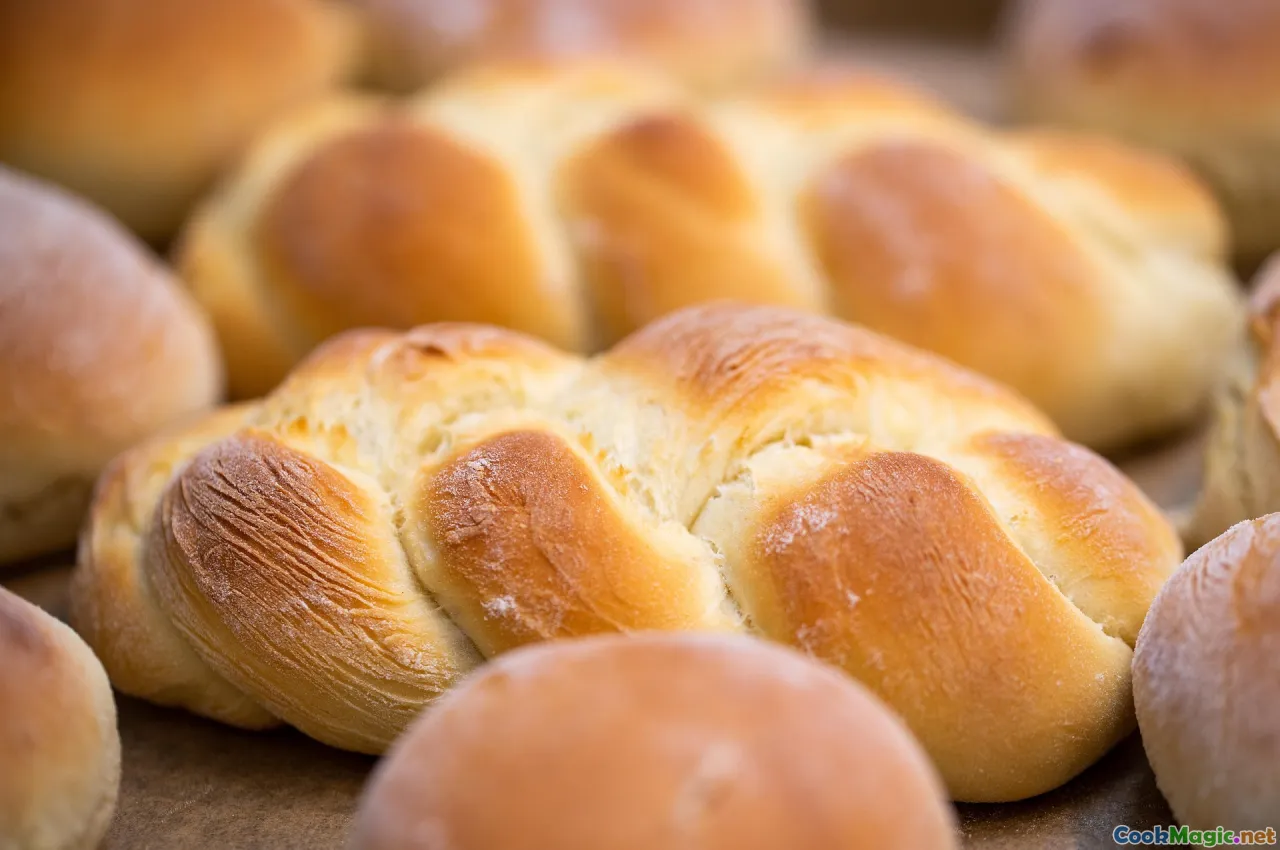
A Grenadian bake is a round of dough with a personality. It wants to rise up and puff, it wants a little chew, and it wants color—like a sunrise on Grand Anse when the sky gives you every shade of peach. The outside should be quietly crisp, the inside tender, almost steamy, a tangle of soft walls that pull apart. Tear into it and you’ll see little webs where steam raced to escape—signs of a good rest and an oil temperature steady as a drummer at Spicemas.
What’s inside the dough? Flour, certainly, a pinch of salt and sugar (just enough to encourage browning and balance), a little fat (oil or butter) for tenderness, and just enough liquid to bring it together—a mix of water and evaporated milk if you’re feeling lush. Some cooks add baking powder; others rely on patience and the dough’s natural relaxation. Fry bakes puff more dramatically than roast bakes, but a well-made roast bake gets a gentle rise and a delightful chew from a hot griddle and a little technique.
Textures matter. A bake that’s too dense sits heavily on the tongue and feels like it never quite woke up in the oil. Too thin and you’re all crunch, no cradle for the saltfish. The sweet spot is a dough that rolls to about the thickness of a coin, with enough elasticity to puff and not split. When it floats and bronzes in the pan, the smell is warm and wheaty—think toasted biscuit meets island breeze.
The Saltfish, Seasoned and Sautéed
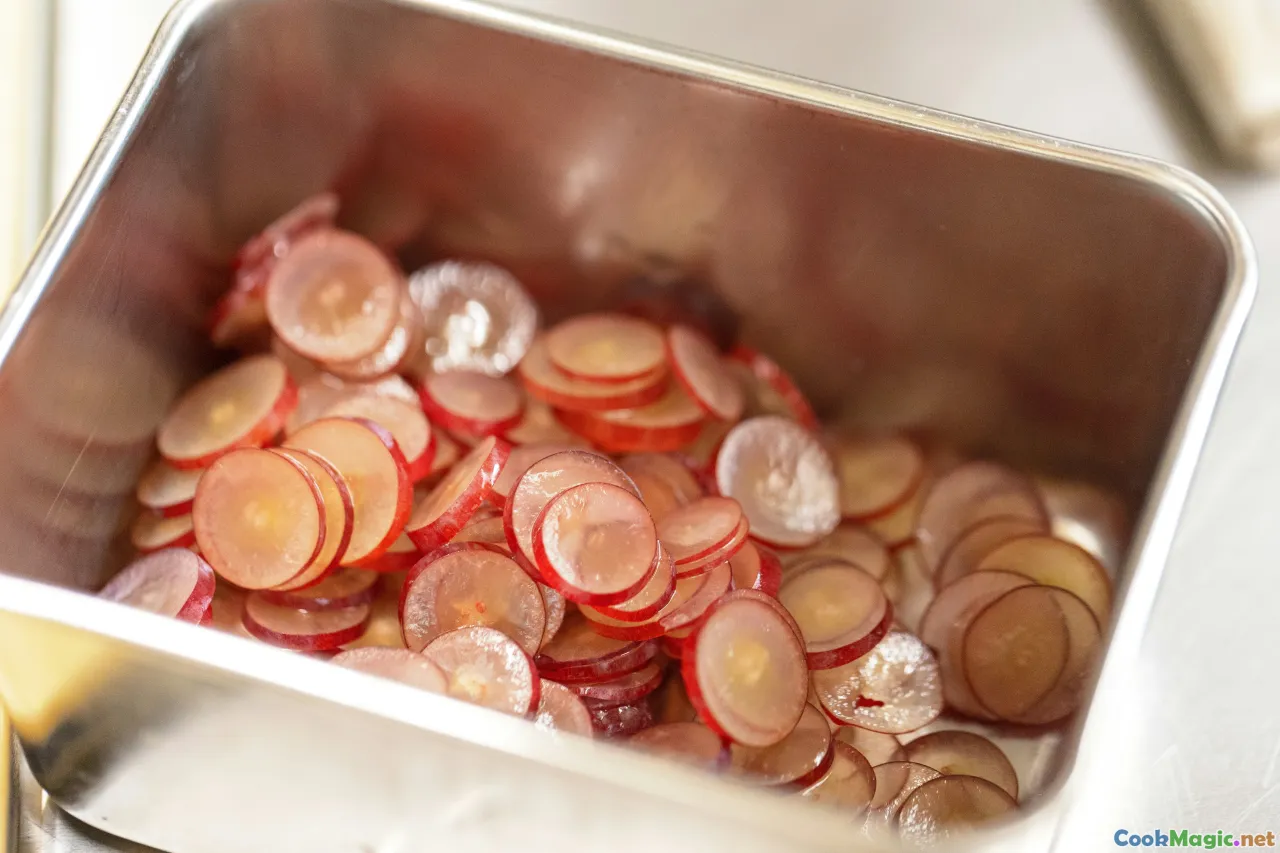
Saltfish in Grenada usually means salted cod, though you’ll also see salted pollock or even local fish salted by hand. The point is preservation, followed by reclamation: you take the salt out and leave the flavor in. The desalting is an act of care. You soak the fish in cool water, change the water, maybe give it a gentle simmer—this is important—just to coax out the salt without rinsing away the character.
Once the fish is tender and flakable, the fun begins. You heat coconut oil (or a neutral oil if that’s what you have) until it shimmers. The onions go first, and they tell you when they’re ready by letting their sharpness melt away. Then come the sweet peppers and, in Grenada, often a handful of chopped chadon beni (culantro), its smell a grassy echo of cilantro but deeper and wilder. Thyme, always. You let these sing together for a minute, then add chopped tomatoes so the whole thing becomes a saucy bed for the fish. Saltfish flakes go in last; you fold them gently, letting them warm until they’ve absorbed the pan’s perfume. A squeeze of fresh lime wakes everything up, and if you like, a sliced Scotch bonnet or a spoon of Grenadian pepper sauce adds the precise kind of heat that lingers, then smiles.
Serve that sauté piled high, glossy with tomato and studded with green herbs. The taste is balanced: saline memory, sweetness from the onion, a feathery bitter tinge from the thyme stalks you forgot to fish out, and the brightness of lime. Put that on a hot bake and expect silence at the table, followed by the kind of sigh that means somebody’s happy.
How-To: My Grenadian-Style Bakes and Saltfish, Step by Step

Here’s the way I make it when I’m homesick for Market Square and the soft slap of dough against a floured board. This yields breakfast for four, or a very pleased pair of hungry people.
- Yield: 8–10 bakes, 4 servings of saltfish
- Time: About 1 hour (plus optional dough rest)
Ingredients for the Fried Bakes:
- 3 cups (375 g) all-purpose flour, plus more for dusting
- 2 tablespoons sugar
- 1 teaspoon fine sea salt
- 2 teaspoons baking powder
- 2 tablespoons softened butter or 2 tablespoons neutral oil
- 1 cup (240 ml) warm water, plus up to 2 tablespoons more as needed
- 1/4 cup (60 ml) evaporated milk (optional, for tenderness and color)
- Neutral oil for frying (about 1–1.5 inches/2.5–3.5 cm deep in your pan)
Ingredients for the Saltfish Sauté:
- 1 pound (450 g) salt cod or salted pollock
- 2 tablespoons coconut oil (or neutral oil)
- 1 large onion, thinly sliced
- 1/2 red bell pepper, thinly sliced
- 1/2 green bell pepper, thinly sliced
- 2 cloves garlic, minced
- 2–3 sprigs fresh thyme
- 2–3 culantro leaves (chadon beni), minced, or 1/4 cup chopped cilantro if needed
- 2 medium tomatoes, chopped
- 1 small Scotch bonnet pepper, sliced (optional, to taste)
- Black pepper to taste
- 1/2 lime, for finishing
Desalting the Saltfish:
- Rinse the saltfish under cold water to remove surface salt.
- Place in a bowl and cover with cool water. Soak 4–6 hours or overnight in the fridge, changing the water twice. If you’re short on time, move to step 3.
- Transfer fish to a pot, cover with fresh water, and bring just to a simmer. Reduce heat and cook 10–12 minutes, skimming off any foam. Taste a small piece—saltiness should be pleasant, not aggressive. If still too salty, discard water and repeat.
- Drain, cool slightly, and flake into bite-size pieces, removing any bones and skin.
Making the Bakes:
- In a mixing bowl, whisk together flour, sugar, salt, and baking powder.
- Rub in the butter (or stir in oil) until the flour looks slightly sandy.
- Stir in the warm water and evaporated milk, starting with 1 cup total liquid. Mix until a soft dough forms; it should be pliable, not sticky. Add a splash more water if crumbly.
- Turn out onto a lightly floured surface. Knead gently for 1–2 minutes to smooth—this isn’t bread; you’re aiming for suppleness, not gluten strength.
- Cover and let rest 20–30 minutes. This relaxes the dough so it puffs nicely.
- Divide into 8–10 equal balls. Keep covered with a damp towel.
- Pour oil into a wide, heavy skillet to a depth of about 1–1.5 inches. Heat over medium to 350–360°F (175–182°C). If you don’t have a thermometer, test with a tiny pinch of dough—it should sizzle and rise immediately without darkening too fast.
- On a lightly floured surface, roll each ball into a round about 1/4 inch (6 mm) thick. Don’t go paper-thin.
- Fry 1–2 rounds at a time. Slide the dough into the hot oil; it should bob up. After 15–30 seconds, spoon hot oil over the top to encourage puffing. Flip when the underside is golden. Total frying time is about 1–2 minutes per bake. Remove to a rack or paper towels. Keep warm.
Sautéing the Saltfish:
- Warm the coconut oil in a skillet over medium heat until shimmering.
- Add onions and a pinch of salt; cook until translucent and lightly golden, 6–8 minutes.
- Stir in peppers and garlic. Cook 2 minutes until peppers soften slightly.
- Add thyme, chadon beni, and tomatoes. Cook until the tomatoes collapse into a saucy mixture, 3–5 minutes. If pan looks dry, add 1–2 tablespoons water.
- Fold in the flaked saltfish. Turn heat to low and warm through, 2–3 minutes. Grind in black pepper and, if using, a few rings of Scotch bonnet.
- Finish with a squeeze of lime. Taste and adjust: a touch more black pepper, maybe a whisper of sugar if your tomatoes were sharp.
Serve immediately: split a hot bake and tuck in a generous mound of saltfish. If you’re me, you add a thin smear of pepper sauce and a few slices of ripe avocado (zaboca). Eat while the steam fogs your glasses.
Roast Bake Variation (for a lighter bite):
- Heat a tawa or cast-iron griddle over medium heat. Dust lightly with flour.
- Roll dough slightly thicker, about 3/8 inch (1 cm). Cook each round 2–3 minutes per side, brushing with a little oil or butter so it blisters and takes on color. This version is chewier and perfect for those who prefer less oil.
Cook’s Notes and Troubleshooting

- For Puffy Bakes: Oil temperature is your silent partner. Too cool and your bakes won’t puff—they’ll drink oil and sulk. Too hot and they’ll brown before they rise. Aim for steady medium heat and test with a small scrap of dough.
- On Dough Resting: If your kitchen is warm, a 15–20 minute rest is plenty. In a cooler space, 30 minutes can be magical. Rest lets gluten relax, which translates to better puffing.
- Avoiding Greasy Bakes: Don’t overcrowd the pan; it drops the oil temp. Drain bakes on a rack rather than stacking them on towels, which traps steam and makes them soggy.
- Saltfish Saltiness: Desalting is a spectrum. After the second simmer, taste. You want savoriness that plays nice with the onions and tomatoes. If you over-desalt and the fish tastes flat, counter with a tiny pinch of salt in the pan and a brighter squeeze of lime.
- Herbs and Heat: Chadon beni brings Grenadian soul. If unavailable, cilantro plus a little extra thyme works, but the flavor will be lighter. For heat, remember Scotch bonnet is about aroma as much as fire—use a sliver and taste gradually.
- Oil Choice: Coconut oil gives a round, tropical whisper to the sauté. For frying bakes, use a neutral, high-heat oil; coconut oil can smoke at frying temps.
Variations You’ll See Across the Spice Isle

Grenadian kitchens carry personal signatures like a well-loved wooden spoon. Here are a few tweaks you’ll find as you travel from Sauteurs to St. David:
- Tomato or No Tomato: Some cooks prefer a drier saltfish sauté with just onions, peppers, and herbs—especially if the bake is soft and they want contrast. Others love the slight sauce tomatoes bring, soaking into the bread’s inner walls.
- Coconut Milk Bakes: A richer dough swaps evaporated milk for coconut milk, lending faint sweetness and a scent like a seaside breeze.
- Spice Isle Kiss: Once in a while, you’ll meet someone who grates the slightest raspy tickle of nutmeg into the bake dough. Purists will debate you; I’ll smile and eat both.
- Roast Bake on a Coal Pot: In the countryside, roast bakes made on a coal pot or thick tawa develop charry freckles and a deeper wheat aroma. They demand butter, and you’ll be right to obey.
- Salted Marlin or Herring: Saltfish is an idea as much as an ingredient. When cod is scarce, salted marlin or local salted fish stands in nobly—firmer, sometimes smokier, and very Grenadian.
A Tale from Gouyave: Breakfast Before the Boats

Gouyave wakes earlier than most places I’ve been. When I first learned to fry bakes for a crowd, it was in a fisherman’s yard by the sea, where the light spreads across the water like melted aluminum. We cooked on a ring-burner perched over a blue gas cylinder, a cauldron of oil trembling with heat. The men had been up before dawn, nets folded neatly like sleeping birds. A neighbor passed with a crate of green figs; a child on her hip sang a tune in a whisper.
I remember the rhythm: roll, fry, flip, drain, hand. Saltfish, already sautéed with tomatoes and thyme, waited in a Dutch pot under a towel to keep warm. A bottle of pepper sauce stood guard. When the first bake tore—steam fogging my glasses—the fisherman’s wife tore it wider, muttered “Look how she puffin’,” and stuffed it with saltfish in one confident motion. He took it with a nod, bit in, closed his eyes as if to listen to the taste.
There were no measuring spoons, only hands and sight and stories. A shake of flour, a pinch that lives between thumb and forefinger, water by the feel of the dough’s breath. The sea was a gray-blue wall; the bakes were light as small clouds. By the time the boats pushed out, we had fed a yardful of people, and the oil smelled like the sun.
Comparing Island Cousins: Bakes vs. Johnny Cakes vs. Festival
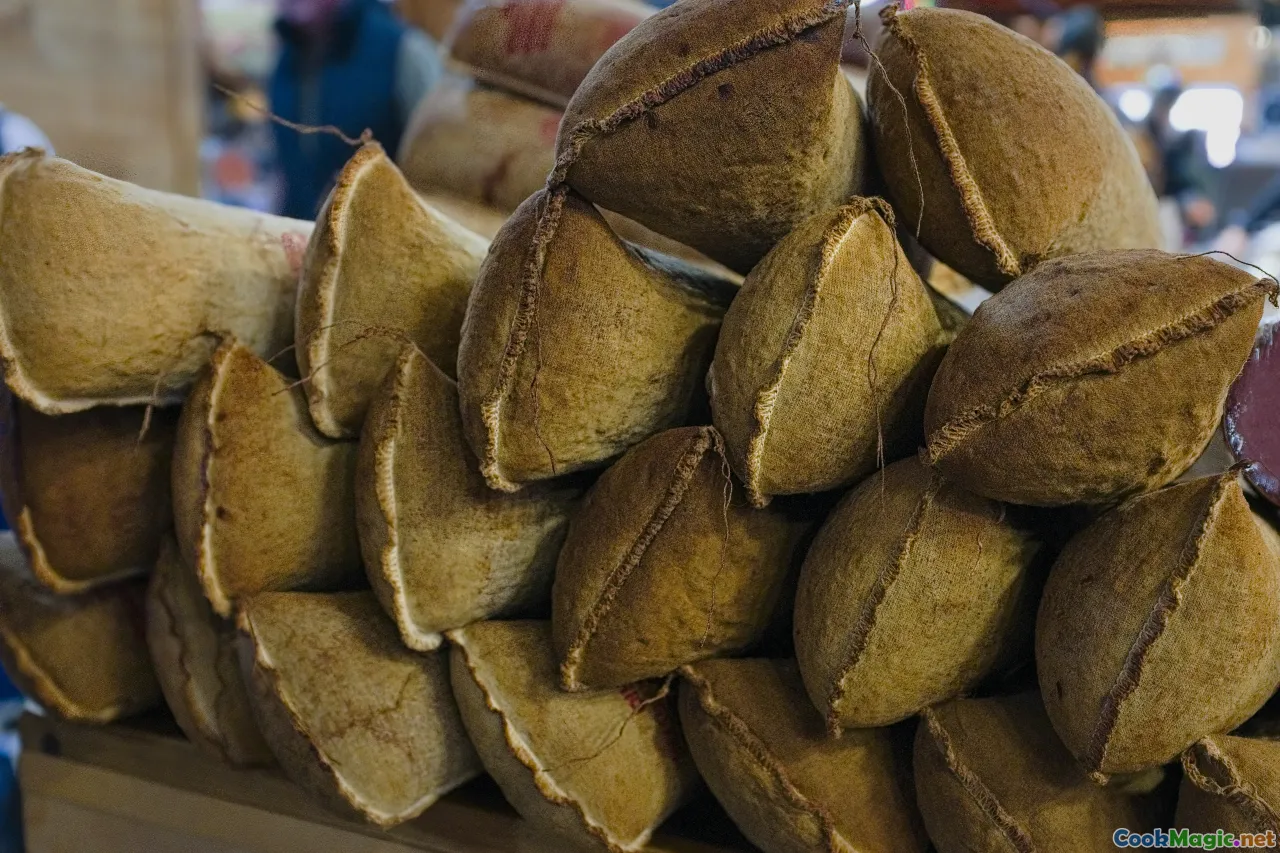
Across the Caribbean, the family tree of fried breads is a lively one. Grenadian bakes share DNA with neighbors but keep their own rhythm.
- Grenada’s Bakes: Typically a straightforward dough—flour, a touch of sugar and salt, fat, and baking powder—rolled and fried to a golden puff. Slightly sweet but not a dessert, meant to cradle savory fillings like saltfish.
- Trinidad’s Floats: Often lighter and airier, sometimes enriched a bit more, the name nodding to their buoyancy in oil. Floats with saltfish buljol (a cooler-style saltfish salad) is a classic pairing there.
- Jamaica’s Festival: Distinctly sweeter and denser, often with cornmeal, and shaped like small torpedoes. Festivals like to hang out with fried fish on the beach, dusted with extra sugar while still hot.
- Barbados and St. Vincent: Similar “bakes” appear, sometimes called “bakes” or “bakes and cocoa tea” for breakfast. Variations in sweetness and leavening shift from island to island.
The saltfish, too, changes costume. In Grenada, the sauté leans savory-herbal, often warm and glossy with tomato. Elsewhere, “buljol” travels cool and bright with lime and raw onions. Each island’s approach is a map of preference, climate, and the pantry at hand.
Where to Taste It in Grenada
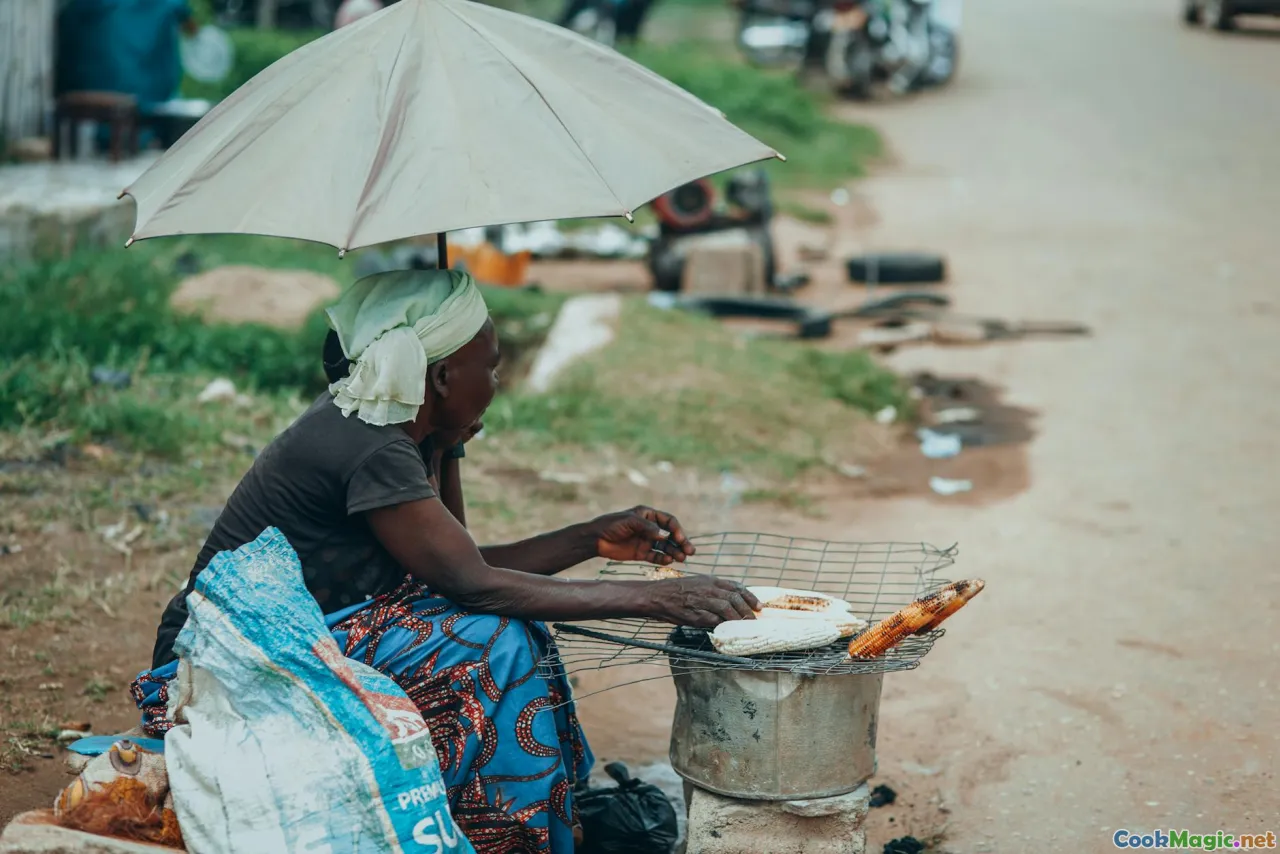
- Market Square, St. George’s: On Saturdays, look for the stalls under bright umbrellas near the northern edge. The bakes go into brown paper bags, and if you ask nicely, you can get the saltfish tucked in while the bread is still breathing steam.
- Roadside Stalls on the Way to Grenville: Small wooden shacks with wide smiles. The sign might simply say “BREAKFAST.” If there’s a pan of oil and a bowl of dough, pull over.
- Gouyave on Fridays: While Gouyave Fish Friday is known for grilled and fried fish, there’s often a vendor or two selling bakes earlier in the evening, throwing off the kind of scent that stops you mid-conversation.
- Carriacou: On market mornings in Hillsborough, bakes and saltfish come with gossip and weather reports. The cook will ask you about your aunt before you’ve finished chewing.
Wherever you try it, listen for the key phrase: “Hot ones just come.” That means puffy, blistered edges and saltfish warm enough to scent the air.
Pairings: What to Drink and Serve Alongside

- Cocoa Tea: Grenadian cocoa tea tastes like a hug. Strong cacao grated and simmered with water, thickened with milk (or condensed milk for decadence), and spiced with cinnamon, bay leaf, and sometimes a whisper of nutmeg. It’s not hot chocolate; it’s more herbal, more cacao-forward, with a fragrant finish that makes the saltfish sing.
- Bush Tea: Lemongrass (fever grass) tea, slightly citrus and grassy, clears the palate between bites and tames the heat from pepper sauce.
- Zaboca (Avocado): Sliced ripe avocado adds cool, buttery ease. A sprinkle of salt and squeeze of lime and you’ve got contrast and comfort.
- Cucumber Chow: Quick-tossed with lime juice, salt, chadon beni, and a flick of pepper. Crisp and bright alongside the warm, soft bakes.
- Pepper Sauce: Grenadian pepper sauces often feature Scotch bonnet with papaya or mango. A few drops deliver sunshine and altitude.
Sourcing and Sustainability

Saltfish muscled its way into Caribbean cuisine through history’s rough seas, but today we have choices. If you can, look for cod from fisheries certified for sustainability, or consider responsibly sourced pollock. In Grenada, salted local fish can also be a delicious alternative—denser, sometimes brinier, and deeply connected to place.
When shopping, look for firm fillets with a clean, ocean smell—not sharp or ammoniac. The flesh should be pearly and even, not dry and chalky. If the saltfish is very stiff, it’s often a good sign; you’ll rehydrate carefully anyway.
For herbs, buy chadon beni at the market—it looks like elongated serrated leaves and smells like cilantro’s bold cousin. Thyme here often comes tied in adorable little bundles. Don’t skimp; this herb is the backbone of the sauté’s music.
Flour matters less than freshness; choose a reliable brand and keep it sealed to avoid the tropical humidity turning it clumpy. Coconut oil for the sauté should smell like the inside of a coconut, not plastic or stale.
Make-Ahead, Leftovers, and Storing

- Dough: Make the bake dough the night before and refrigerate tightly covered. Let it sit at room temperature 30 minutes before rolling and frying. The rest develops flavor and tenderness.
- Fried Bakes: Best hot, but you can rewarm in a 350°F (175°C) oven for 5–8 minutes to refresh. A quick pass in a hot dry skillet brings the exterior back to life.
- Roast Bakes: They freeze surprisingly well. Wrap individually and reheat on a tawa or in a toaster oven until warmed through.
- Saltfish Sauté: Keeps 3–4 days in the fridge. Reheat gently with a splash of water. It’s also excellent folded into a morning omelet or spooned over boiled provision (green banana, yam, breadfruit) for a different breakfast rhythm.
The Small Details That Make It Sing

- Lime at the End: Acid lifts saltfish from good to irresistible. Add lime off the heat so it stays bright.
- Thyme Stems Out: Fishing out woody thyme stems avoids the tiny bitter nibble. Save them for stock if you’re thrifty.
- Oil Over the Bake: That first moment in the fryer, ladle hot oil over the top to encourage an even puff, like coaxing a smile from a shy friend.
- Quiet Hands: Handle the dough gently. Overworking makes it tight and sulky, less likely to balloon.
- Heat Balance: Saltfish likes to be warm, not tortured. After it goes into the pan, keep the flame gentle so it doesn’t toughen.
A Note on Names and Identity

Words like bakes, floats, johnny cakes—these are more than culinary terms. They are passports stamped with place and belonging. In Grenada, you’ll hear “bakes” with a fondness that folds the dish into family. During Spicemas, after long nights of music and mas, bakes and saltfish are the steadying hand. In churches after service, at school fundraisers, on a Sunday when rain patters on zinc roofs—this dish shows up as if it had been waiting behind the door.
Food memory is layered. When a Grenadian abroad makes bakes on a winter morning in Brooklyn or Brixton, the kitchen warms with both the heat of the stove and the heat of remembering. The saltfish pan looks out at a different street, but the aroma is the same, stubbornly hopeful. The first tear into a hot bake is the exact shape of home.
Why It Works: An Anatomy of Pleasure

- Salty-Sweet Balance: The saltfish’s brine meets the bake’s hint of sugar in a delicate seesaw—neither wins, both play.
- Fat and Acid: Coconut oil rounds the edges; lime slices through. This is the classic dance of Caribbean cooking, where richness and brightness share the floor.
- Soft and Crisp: A good bake bites with a whisper of crunch, then yields to a plush interior. The saltfish, flaky and silken, nestles into that softness.
- Herbal Backbone: Thyme’s peppery green hum, chadon beni’s dusky citrus, and black pepper’s warmth stay like a chorus line beneath everything.
A Cook’s Walk Through St. George’s

There’s a woman I think of when I fry bakes—a vendor near the steps that spill from Young Street down to the Carenage. She wears an apron printed with lilies. When she fries, she keeps one ear on the oil and one ear on the world: calling to a passing fisherman, teasing a schoolboy, noting the weather’s intentions. Her hands never stop moving: roll, flip, drain, fill, hand off, smile.
I once asked her about measurements. She laughed and handed me a dough ball. “You measure with your fingertips,” she said. “They tell you if it’s right.” I rolled the dough—it was supple, almost breathing. She dropped it into the oil and it puffed like a held breath released. When I bit into the finished bake with saltfish tucked inside, the Carenage behind her might as well have been a painted backdrop. All I could see was the interior—snowy and soft with a hollow I wanted to fill again and again.
Tips for First-Timers and Perfectionists

- Practice with a Half Batch: Fried dough rewards repetition. Your second and third tries will be markedly better.
- Keep Dough Balls Covered: A damp towel prevents crusting, which can lead to splits and uneven frying.
- Adjust Thickness: If your bakes are not puffing, try rolling slightly thicker. If they’re dense, roll a bit thinner or let the dough rest longer.
- Control the Oil: A small portable electric burner can maintain steadier heat than a powerful gas flame.
- Taste as You Go: The desalting step, the sauté’s seasoning, even the lime at the end—taste, adjust, taste again. This is a cook’s dish.
Cooking with Family: A Small Ritual
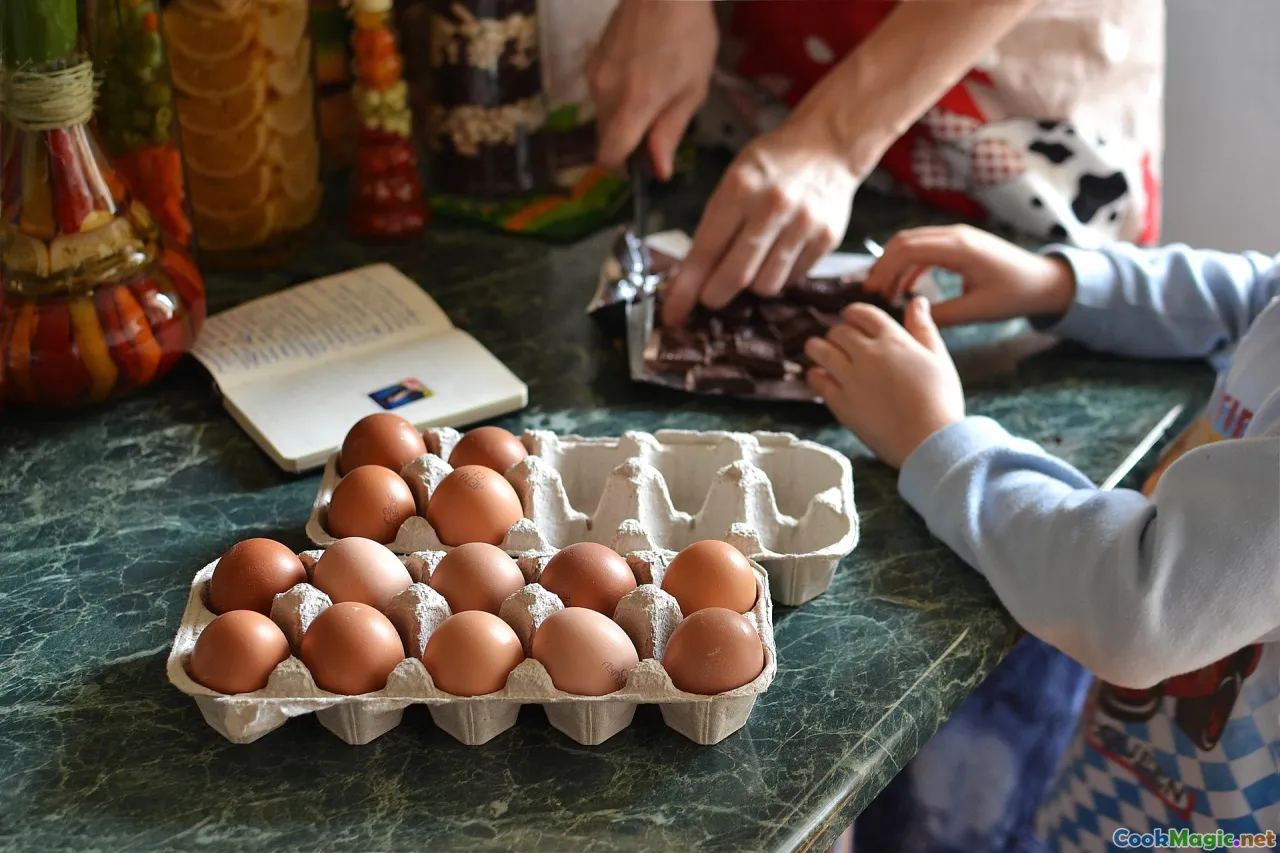
One of my favorite rituals is calling home when I make bakes and saltfish. The phone hums on speaker as I stir onions; a voice miles away tuts softly when I add the peppers too soon, says, “Give the onion its time, nah.” I am reminded that “time” in this dish is not simply minutes on a clock but trust—trust that the dough will puff if you let it rest, that the salt will leave the fish if you coax it, that the flavors will come together if you don’t rush them.
There’s emotion tucked into these motions. The way a wrist flicks to spoon hot oil over the dough, the half-smile when the first bake balloons, the sigh that a kitchen makes when lime hits hot saltfish and releases its bright perfume. Breakfast is a mood, a memory; in Grenada, it’s a declaration that you’re here, now, present and hungry and ready to meet the day.
A Small Feast for Any Morning
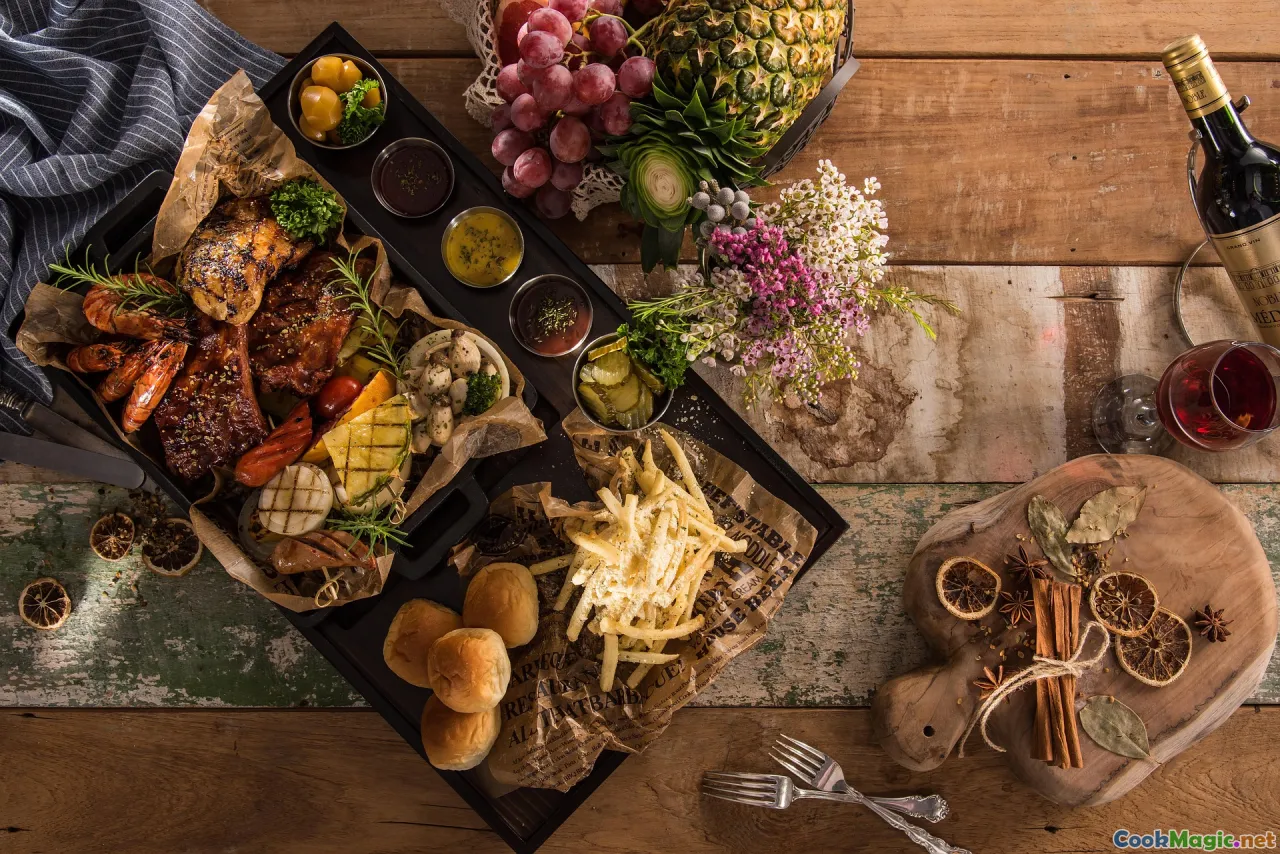
Set your table with the small luxuries that turn breakfast into a feast: a bowl of pepper sauce with a tiny spoon, a plate of sliced cucumbers glossed with lime, half a ripe avocado, cocoa tea in chipped enamel mugs. Stack the bakes nearby under a clean dish towel to keep their warmth, and bring the saltfish to the table in a heavy pan so it stays warm against the wood. Invite whoever’s around. They will come.
What you’ve made isn’t just fuel. It’s an edible map: lines connecting the North Atlantic’s cold seas to a Grenadian kitchen’s warm stove, lines connecting market stalls and coastal yards to your own hands, lines connecting morning to memory. When the last bake is torn and the last bit of sauté dragged across the plate and devoured, you’ll understand why this classic is not simply a dish but a way of saying “home.”
The smell of coconut oil will linger, the pan will glisten, and someone will ask when you’re making it again. That’s the secret of bakes and saltfish—you never truly finish it. You just pause until the next morning calls your name.









